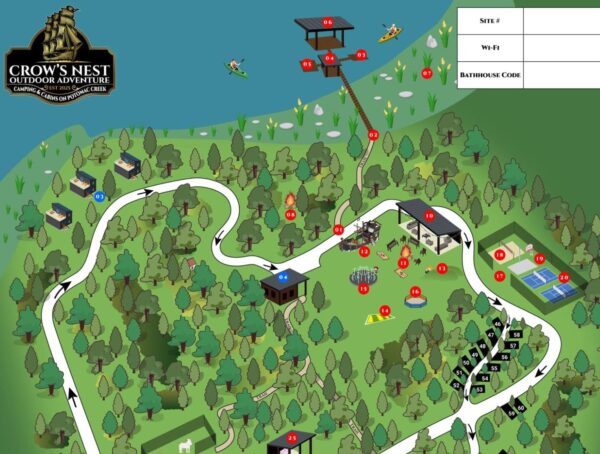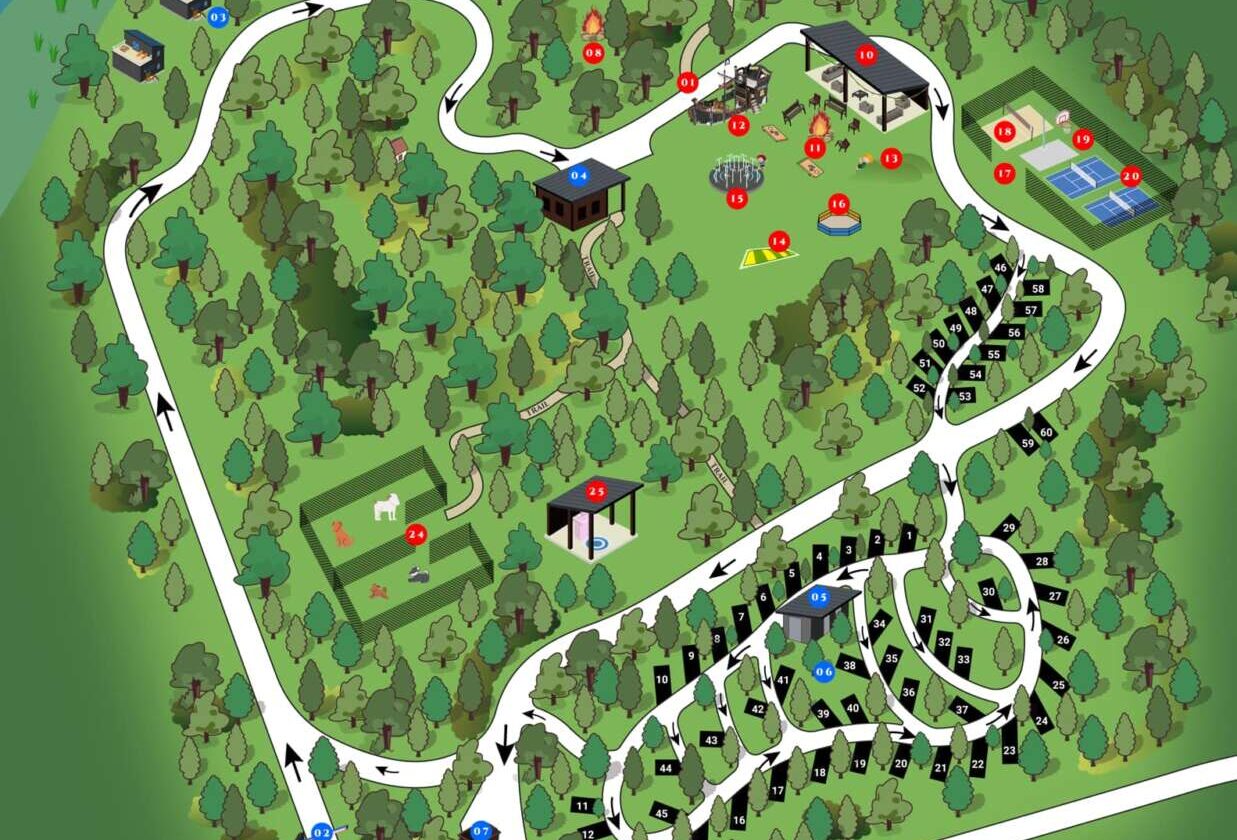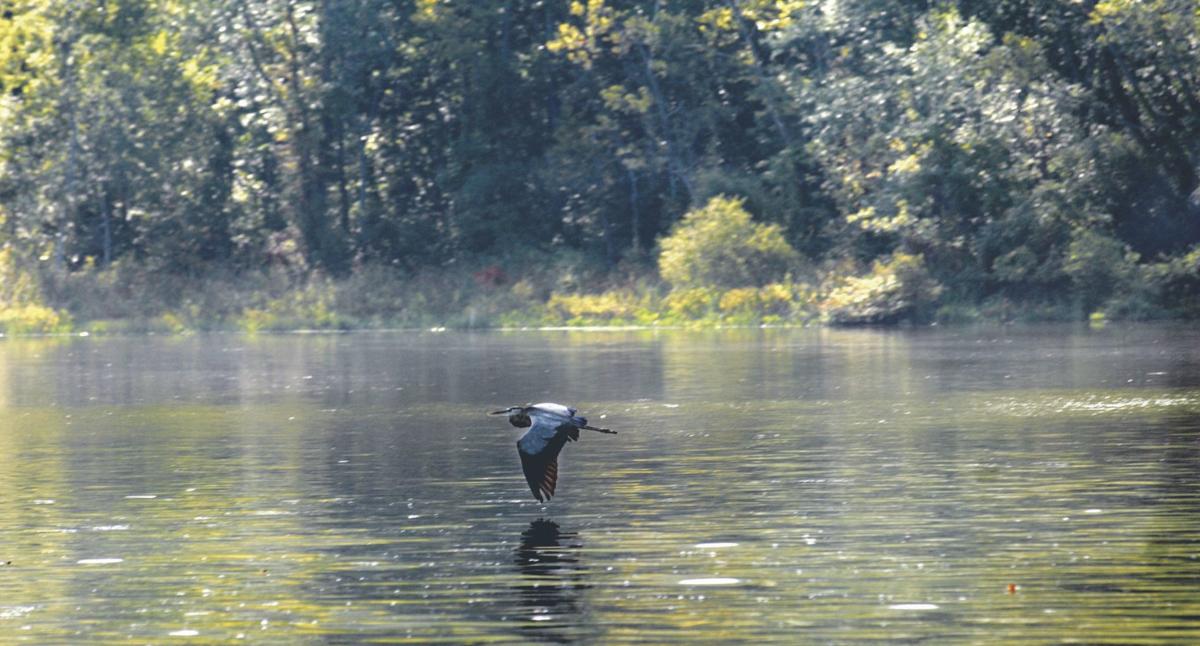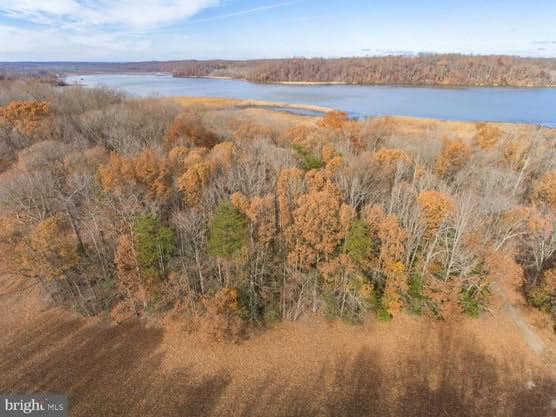



A permit application for a 1,000-foot pier extending through marshland into Potomac Creek at a contested campground has been withdrawn from a review by the Virginia Marine Resource Commission.
The pier was proposed by Mark McLeod, owner of Crow’s Nest Outdoor Adventures, who plans to build a 150-site campground on the banks of Potomac Creek in the White Oak area of Stafford County. So far, the project has faced opposition from neighbors and the Patawomeck Tribe due to safety, privacy, and environmental protection concerns.
In an email, McLeod said he intended to have as little disturbance as possible in the pier’s construction. Much of the dock would have crossed marshland to access the water. McLeod said construction would be done by hand to avoid disturbing the marsh area. Once it reached the water, construction would continue from a barge. A natural path would lead from the campground to the pier, and McLeod said land would not be cleared to access the dock.
Environmental Concerns: Impact on Marshland and Wildlife
Residents were concerned about the pier and campground’s impact on the marshland. Potomac Creek’s wildlife includes blue herons, wood ducks, white pelicans, bald eagles, and blue crabs. Crow’s Nest Natural Area Preserve will be on the other side of the creek from the campground.
The Virginia Department of Conservation and Recreation website states, “The wetlands on the Crow’s Nest peninsula account for 60 percent of all the marshes in Stafford County, representing some of the best examples of diverse and intact wetland habitats in the Potomac River drainage.” The area also includes 23 miles of stream, riparian and wetland buffer, which acts as filters for the water, and 2,310 acres of mature hardwood forest, including two forest types recognized as globally rare by DCR’s Natural Heritage Program.
Campground Development Plans
In November 2021, the McLeod family purchased 75 acres on Potomac Creek’s Big Marsh. The land includes 41 acres of wetlands and 34 acres of agricultural land. In an email, McLeod said, “We bought the property with the intention of putting an 11 to 12-home subdivision on it. The more we drove through the property, the more we felt that it should be preserved for families in the surrounding area and beyond to come and enjoy the outdoors.”
The campground is being developed by right and does not need approval from the Stafford County government. In his email, McLeod outlined the overall vision for the campground. In addition to 150 campsites, he’ll build cabins along the water and family- and pet-friendly amenities. He plans to make the campground in two phases: The first phase will be building 60 camping spaces, a bathhouse, a store/office, a pier, a dog park, and outdoor activities, while the second will see the remaining sites added, a swimming pool, and hot tubs, and cabins.
Community Voices: Safety, Privacy, and Traffic Issues on Belle Plains Road
Belle Plains Road is a narrow two-lane road with deep drop-offs on both sides and no shoulders. It often floods significantly due to poor drainage issues. Deuntay Diggs, George Washington District Supervisor, posted in “Stop the Belle Plains Campground,” a private Facebook group, that VDOT would be working on the road in May, ditching both sides of the road, clearing obstructed pipes, and laying a new crosspipe to facilitate water flow across the roadway. He also added that there are no current plans to widen the street.
He added that the Board of Supervisors could not stop the campground plans and noted the RVs would require a conditional use permit, and the proposed pier and dock are not by right. Diggs did not respond to a request to comment on this story.
An April 8 email was sent to each of the Stafford Board of Supervisors noting that although the development is allowed by right, they believe a Conditional Use Permit, which the Stafford County Board of Supervisors must grant, should be necessary to address adverse impacts on property owners. The email included a signature list of over 180 area residents and expressed concerns about the road’s limitations for higher traffic. The street passes the campground and ends at Belle Plains Boat Club, with no turn-around areas for vehicles that may miss the campground entrance.
McLeod acknowledged the neighbors’ objections.“ Regarding [their] concerns for Belle Plains Road, the road already handles large farm equipment, school buses, delivery trucks of all sizes, and all the boat traffic getting to the boat club at the end of Belle Plains. There would not be anything traveling to the campground that would cause or add any additional concerns that are not already being dealt with on a daily basis,” he said.
Several homes are located within the property, three of which share a driveway with the campground’s main entrance. Homeowner Joni Kanazawa said she and other neighbors could not oppose the campground until the plans were made public. Shortly after the property was purchased, they were told the original plan was to build 11 or 12 homes, which she said would involve far less land clearing and environmental disturbance than 150 campsites and RV amenities. Sometime after the soil tests were done to see if the land would support septic systems, it appeared the plan switched from homes to a campground.
Conditional Use Permits and Road Improvements
Across the water, Crow’s Nest Preserve does not permit camping, stating on the website that “negative impacts and degraded site conditions, over the long term. Even low-intensity (dispersed) camping causes some adverse impacts, including soil compaction, damage to vegetation, and waste management issues.” Kayaking and canoeing are permitted at the Preserve, with strict launching and docking point restrictions.
In their April 8 email to the Board of Supervisors, neighbors also addressed environmental concerns, such as the impact on breeding grounds for blue herons and other species, adverse impacts on adjoining property owners, and the preservation and protection of an environmentally sensitive and historically significant area within the county.
Environmental Quality and Water Safety Concerns
Dr. Ranjit Singh, an associate professor at the University of Mary Washington, said in an email that he has actively expanded the Preserve and participates in the annual count of Blue Heron nests each winter. Having grown up in the area, he has concerns about the current quality of the water, which will only deteriorate if the campground opens.
“The Virginia Department of Environmental Quality (DEQ) often gives Potomac Creek and adjacent waters the EPA’s worst possible water quality rating due to high levels of E. Coli, PCBs, etc. Our farm animals and wildlife are forced to rely on this water. The goats drink the water, and we drink the milk and consume the cheese. My kids cannot eat the fish they catch in the creek because we worry about the risks. We are poisoning our local environment as well as the Chesapeake Bay…,” wrote Singh. He’s now writing a book about Potomac Creek and owns Unicorn Farm upstream from the campground.
Singh and his family are avid tent campers. “The planners do not seem interested in quiet, low-impact camping (like tents). Rather, the idea seems to be a park for large RVs, jet skis, etc., which I think would be completely unsuitable for that sensitive locale,” he adds.
Tom Holland, who lives on Belle Plains Road, states in an email that he’s not opposed to camping or enjoying the outdoors but is opposed to a campground. “I have family in this area that are commercial fishermen and are afraid of the impacts on their livelihoods. The studies can be done, but the total damage to the environment will never be known until it’s done. And then it’s too late to fix it,” Holland wrote.
Patawomeck Tribe’s Stand
A May 8 letter from Chief Charles Bullock of the Patawomeck Indian Tribe of Virginia outlines the Tribe’s concerns in five categories: natural resources, public safety, cultural resources, traditional cultural practices, and economic opportunity. He notes intensive development along the Potomac Creek’s shores will increase runoff and siltation, impacting the creek’s navigability for fish and humans. The Department of Wildlife Resources lists Potomac Creek as a waterway of highest concern related to PCB contamination, which will continue to deteriorate without stormwater mitigation practices.
Bullock notes natural marshes act as filters for the waterway. Still, the impact of a potential pier through the marsh will reduce filtration effectiveness, and the increased boat traffic will accelerate the erosion of the marsh. The erosion and loss of the marshlands impact spawning areas for many fish species, such as river herring, catfish, and carp. The shores of the Potomac Creek have “traditionally been the homeland of the Patawomeck community, with human occupation dating as early as 15,000 years ago.” He notes that the landscape, previous archaeological discoveries, and known historical events suggest significant archaeological resources may be in the area. A recent archaeological survey only focused on shallow discoveries, did not explore wooded areas, and did not ensure burial sites from both the Tribe and Civil War soldiers would not be disturbed.
Conditional Use Permits and Road Improvements
Stafford County’s Wildlife Habitat Protection Plan penned in 2000, notes the environmental sensitivity of this area. The report listed Potomac Creek as a “Key Watershed” that possesses “the characteristics necessary for sustaining a wide range of wildlife habitats. The characteristics include contiguous forest stands, areas that provide special land features such as wetlands or buffered stream areas, continuous tracts of undeveloped land, and features necessary to support sensitive and endangered species.”
At the time of the report, Potomac Creek was listed as Highly Sensitive, with “50 to 70% of the land in the watershed is undisturbed” and “having some potential of supporting wildlife habitat and endangered plant and animal species.” Kathy Baker, Acting Director of Stafford County Zoning and Planning, said the 2000 document now serves as a guideline for more current methodologies for review processes. The standards change to state and county codes to “incorporate new initiatives…related to Environmental Protection,” she said.
McLeod also noted that the Virginia DEQ recently oversaw the drilling of a well directly into an aquifer, which will provide enough water for the campground’s needs. The Virginia Association of Professional Soil Scientists was also planning to send 100 scientists to the property for a training and development event studying soils. McLeod said the Virginia Department of Health has confirmed the property meets approval requirements for the septic drain field, which will be designed by an engineering firm hired by the campground.
